Fought At Frankfurt
2206 days 19 hours 10 minutes ago
A last push at Homberg
60 POINTSLocation: Nieder-Ofleiden, NW of Homberg, SE of Marburg-an-der-Lahn, north Germany
Mission: Ruhr Last Hurrah (Firestorm Stripes mission)
Points: 64 points
West German Leopard 1 Kompanie: Leopard 1 Company HQ, 2 Zugs of 3 Leopard 1, 1 Zug of 3 infantry and 2 Milans in 3 Marders, 2 Gephards.
West German M113 Panzergrenadier Kompanie: Company HQ Rifle team, 1 Zug of 3 infantry and 3 Milan in M113s, 1 Zug of 2 infantry and 2 Milans in M113s, 2 Gepards, 2 Luchs.
West German support: 2 Tornado GRU fighter-bombers.
Polish T-72M Tank Company: T-72M HQ, 3 platoons of 3 T-72Ms.
Polish T-55AM Tank Company: T-55 Battalion HQ, 3 companies of 4 T-55s.
Polish BWP-1 Motor-Rifle Battalion: HQ rifle team in BMP-1, 3 companies / platoons, each of 4 AK-47s and 3 RPG-7s in 4 BMP-1s, 4 T-55AMs, 3 Spandrel wheeled ATGM, 2 ZSU-23-4 Shilka.
Nieder-Ofleiden wasn’t a big place, but it lay on the road from Marburg to Homberg, and Homberg was currently the key to stopping the Soviets getting to Frankfurt. At any rate, the Oberst had been very clear that 4th Panzergrenadier brigade was going to hold Homberg. Hauptmann Edels idly wondered if that made his territorials into panzergrenadiers rather than just jaeger. Perhaps they might get a pay rise when the war ended – if they survived. Today Brigade seemed particularly anxious that the Soviets be stopped here, in the smaller villages, and they had sent a platoon of Leopards and a couple of Gepard flakpanzern to protect this obvious approach route. As evening approached, he had dared to hope that the day might pass by peacefully. Then his scouts called in, warning of a large tank force heading straight down the road.
On the western flank, the Polish infantry and T-55s had raced into dead ground behind a warehouse. No time to worry about them – the other flank was a more pressing problem. The FO grinned as the Luftwaffe made an appearance, two Tornados dropping cluster bombs on the running Poles. The infantry hit the deck, and one T-72 blew up, with another stopped. A decent start. His Leopards moved out of concealment amid the houses of Nieder-Ofleiden and opened up at the BMPs on the eastern flank. Despite the extreme range, all four were left burning. The Milan teams concentrated on the two T-72 platoons in the centre, destroying three tanks, baling a fourth; from the cloud of smoke, one survivor had pulled out entirely.
The infantry and tanks on the eastern flank rallied quickly and continued their advance, pouring fire into the houses. Cries of “Sanität!” followed as 120mm rounds exploded. However, when the riflemen attempted to close the distance, there was still enough MG3 fire to suppress them.
It was another matter by the industrial buildings. A third platoon of BMP carriers was racing up from reserve, making the Polish target unmistakable. The riflemen blitzed forward into the warehouse and then moved swiftly through it, opening up with their AK-47s at close range. Meanwhile, the supporting T-55s failed to make such a bold move, but nonetheless drove up and sprayed the defending jäger with their machine guns. Already understrength, one squad was destroyed in the subsequent assault and another surrendered. The Milan teams fell back, leaving the objective in Polish hands.
The Bundeswehr’s situation was grim. Normally a quiet man, Edels was screaming orders into the radio. Lead elements of the panzer company deployed as Homberg’s reserve had started to arrive – a Marder panzergrenadier zug was perfect, but it had arrived from the town and couldn’t bring its weapons to bear. His Leopards had repositioned rapidly, smashing into the gardens of Nieder-Ofleiden and setting three of the reinforcing BMPs ablaze. The returning Tornado flight had run into heavy flak from the T-55 platoon, one aircraft breaking off, while the bomb load only blew up a single tank, leaving the infantry holding the objective unscathed. The two Gepards came out of concealment among the industrial buildings and raked the T-55s with fire, destroying one and baling another. Milan fire from the jäger zug’s survivors didn’t stop the Poles consolidating on the objective. On the eastern flank, MG3 fire took out two Soviet teams, but that was of little consolation.
Edels breathed a sigh of relief. The stench of cordite hung all around, but the Poles’ incursion into Nieder-Ofleiden had been halted – for the moment at least. The remaining T-55 had rumbled into a Milan missile quickly enough, but it had taken the combined firepower of the dismounted panzergrenadiers, their Marders, plus two zugs of Leopard 1s and their officer to eliminate the dug-in motor-rifle platoon. Dusk had fallen, and the Soviets’ shooting had become desultory. One of his Milans had claimed the last BMP approaching the threatened objective, and it didn’t appear that further reinforcements were on their way. Curiously, Brigade seemed irritated rather than pleased: the Marders and Leopards withdrew in short order. The panzer officer had the last word. He clapped Edels on the shoulder, offered a small flask of schnapps and said, as quietly as he could over the rumble of a tank engine,
“Well done for holding them again, kamerad. Now we are off to hit them for a change. Zum gluck!”
And with that, he scrambled up, and his wave was lost in the train of tail-lights heading north.
Result: West German victory, 0 platoons lost.
Victory points: West German 6 VPs, Polish 1 VP.
By mutual agreement, the game concluded at the end of turn 3. It seemed a logical point – the Soviet attack had failed and night had fallen. Rather than turn this into a slow grind, we chose to fight a second game, which I'll post later.
This was the biggest game we had played to date, and it was the first time we had reserves and air power to contend with. I don’t think either of us made any obvious tactical mistakes. Either of the two Polish flanking attacks posed a threat, and their combination – with the option of reinforcement from his centre – posed some interesting dilemmas. Once again concentrated ATGM fire reliably knocked out T-72s, but I didn’t have enough firepower to address the sheer number of Soviet targets (the usual problem). Stopping the eastern attack and gutting the centre was straightforward enough (helped by his reserve T-72 platoon failing a string of bogging checks), but his western attack got into dead ground, and then steamrollered the unfortunate infantry in the way. The volume of fire needed to take out just six infantry teams (albeit dug in) was considerable. Matthew was very impressed by the way his infantry performed, and I suspect I will be seeing more of them.
The Tornados were the other novelty. They certainly helped, claiming a T-72 and two T-55s, but a flight of two struggled to get hits, and the infantry proved resilient. For four points I think they are a useful light AT artillery, and I’ll certainly take them again in bigger games. I’m less sure what I would drop to afford a bigger squadron.
The reserve rules added an interesting dimension, as we had much more limited forces than our army list suggested. With 11 units (excluding transports), I had a respectable chunk of my force on the table at the start, and one unit of reinforcements per turn rounded it out nicely. By contrast, Matthew had 12 units excluding transports, and their small size rather diluted the combat power on the table. His T-55 company never arrived (presumably re-routed by command when it became apparent that the attack wasn’t going to plan), and he still had his Spandrels and ZSU-23s in reserve. For once this gave my better quality but outnumbered force an advantage!
Battle Report Author
Army Lists Used In This Battle
Recommend Commander For Commendation
Share this battle with friends
DaneaxeWins
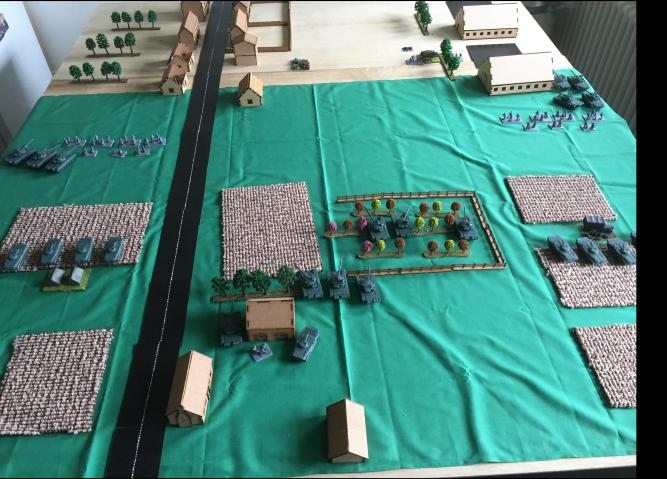
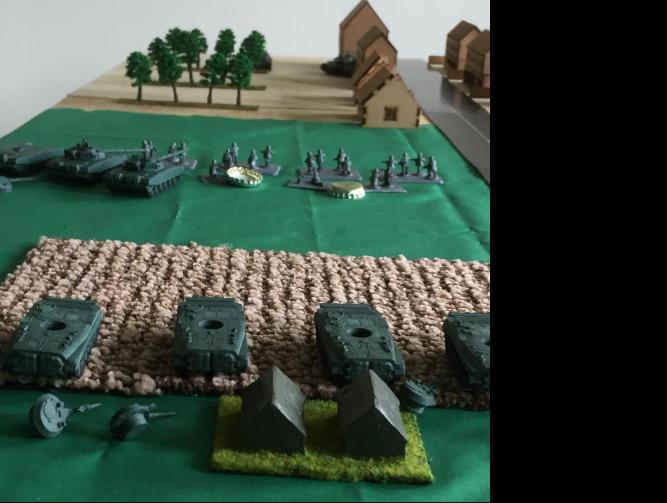
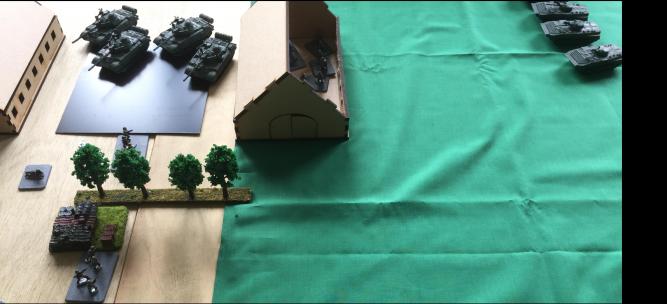

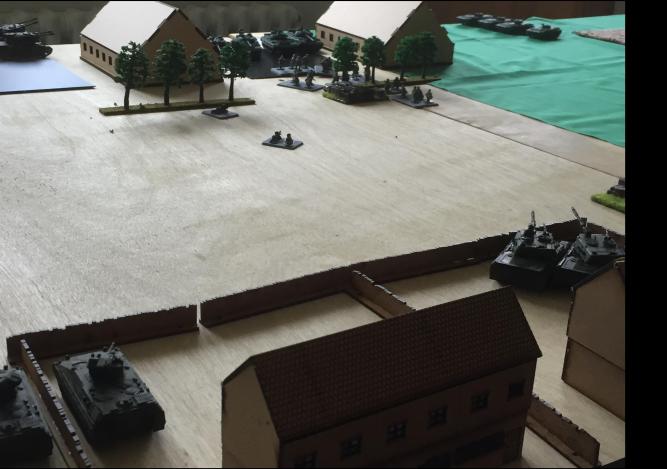
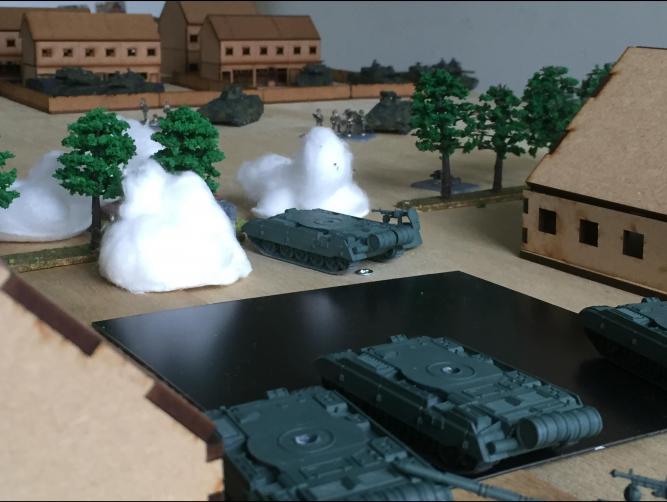


Nice AAR playing is important; Congrats on another win!
Congratulations on your victory. Nice report. Thanks for posting.
Great report again. Congratulations on the win.
Well played.
good report
Glad you’re sharpening up your game, Daneaxe! Congrats on another win!